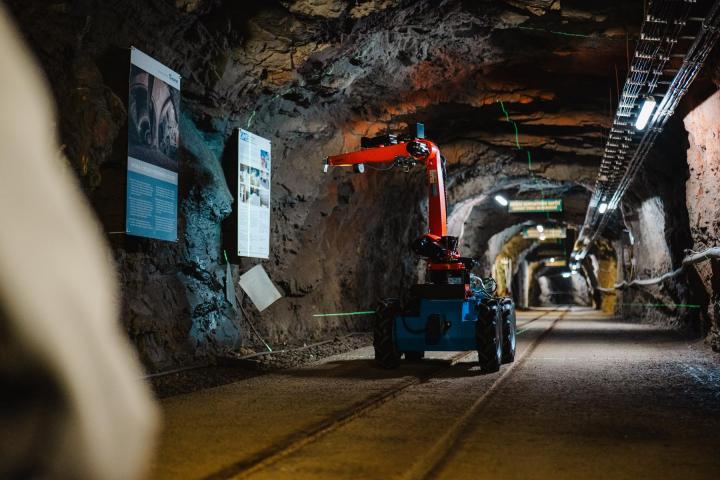
Top company representatives were introduced to, for example, a university robot for inspecting and monitoring underground structures, provisionally named JULBOT (Josef Underground Laboratory Bot). This robot is a remotely controlled platform with sensors that enable comprehensive perception and analysis of the surrounding space, including detection and semi-autonomous identification of various objects such as building structures, people, or other structures located in underground spaces. The specific configuration of the presented robotic platform is designed to effectively handle the demanding tasks associated with in-depth exploration, inspection and monitoring of underground structures. This technology contributes to increased safety and efficiency of work processes, as it allows for exploration and inspection in environments that are difficult or potentially dangerous for humans to access. The robot, which will be used for research and teaching, differs from similar machines in its robustness and resistance to underground conditions.
The event also included the presentation of a georeferenced digital model of the entire workplace, which is key to the deployment of robotic systems so that the robot is fully familiar with the environment in which it operates. In such an environment, it is then possible to scan cross-sections and evaluate possible unexpected situations that could arise underground. This model forms the basis for the use of digitization and automation underground. This is one of the reasons why most of the digitization activities at the Josef Underground Laboratory last year focused on its preparation and on the digitization of ongoing experimental work related, for example, to the storage of radioactive waste or energy storage.
Research in the field of robotics has been conducted at Faculty of Civil Engineering of Czech Technical University in Prague for several years, both in the area of robotization of bricklaying and the development of testing of robotic bricklaying units, as well as in other segments, including the use of robotics underground. Robotics in underground environments has a wide range of future applications, whether it be the handling of hazardous materials, the construction of specific structures and structural diagnostics, the search for people in unexpected events, and a number of other activities. It can offer precision and quality of work, increased productivity, higher levels of work safety, reduced error rates, and documentation and monitoring.
The Josef Underground Laboratory at Faculty of Civil Engineering is a unique underground facility for practical teaching and experimental activities. It is based in the Josef Adit, which was excavated in the 1980s in connection with the exploration of two gold deposits. The adit, located near the villages of Mokrsko and Čelina, was loaned by the Czech Ministry of the Environment to faculty for educational and research purposes. The Josef Underground Laboratory was opened in 2007. To date, approximately 6 km of adits and crosscuts have been made accessible.